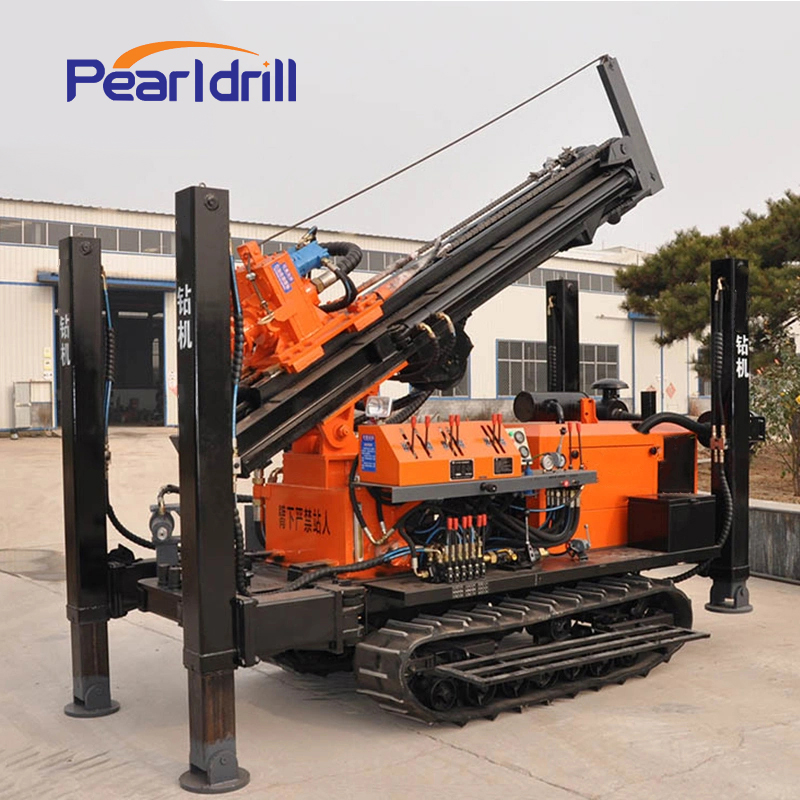How to Select a Water Well Drilling Rig in Granite Geology in 2025
Granite is a classic, tough, and dense igneous rock. Its geology really makes drilling a pain and demands high-quality equipment and techniques to get a well through successfully. The main challenge is dealing with its extreme hardness and abrasiveness.

Granite's Challenges for Drilling
1. It's Super Hard and Strong: The main minerals in granite—quartz, feldspar, and mica—make it incredibly hard. This means your drill bits wear out fast, and your drilling speed (Rate of Penetration, or ROP) is going to be slow.
2. Highly Abrasive: Especially where there's a lot of quartz, it acts like sandpaper, significantly speeding up wear and tear on all your drilling tools.
3. Water is All About Fractures: Granite itself doesn't hold much water (low porosity). Any successful well water is going to come from hitting fissures, joints, fault zones, or the weathered rock layer near the surface. If you want a deep, high-yield well, you have to punch through to those main fracture zones in the fresh bedrock.
4. Keeping the Hole Straight is Tough: Since the rock is so hard, if you're not careful, the hole can easily go crooked (deviation). This messes up your casing installation and the overall quality of the finished well.
Recommended Drill Rigs
How it Works: It uses high-pressure air to power a hammer unit right down at the bottom of the hole. It drills by using a combination of high-speed impacting and rotation to smash the rock.
The Big Advantages:
Excellent Speed in Hard Rock: The hammering action is far more effective at breaking granite than just simply grinding it away with rotation.
Great Debris Removal: The compressed air is fantastic for cleaning the hole, quickly blowing the rock cuttings out.
Simple to Operate: It’s great for shallow to medium-depth wells.
The Catch: You need a huge, high-pressure air compressor to run it efficiently.
Best For: Almost all small to medium water wells and the shallow parts of geothermal wells in granite areas.
2. Full-Hydraulic Rotary Rigs / Core Rigs
How it Works: These use a hydraulic system to deliver massive torque (turning power) and downward pressure. It drills by rotating, grinding, and cutting the rock.
The Big Advantages:
Deep Hole Capability: Perfect for major deep wells or geothermal projects that need to go several hundred meters down or more.
Better Vertical Control: These rigs are more stable, and the tooling is stiffer, which makes keeping the hole straight much easier.
Flexible Methods: You can use various techniques like mud circulation, or even air-lift reverse circulation.
Best For: Deep geothermal wells or big industrial/agricultural wells where depth and high quality are non-negotiable. You'll need high-strength roller cone bits (TCI) or specialized PDC bits for hard rock.

Key Techniques & Must-Have Equipment
1. Drill Bit Selection:
For DTH: Use hammer bits with highly wear-resistant alloy teeth (like carbide ball-tooth bits).
For Rotary: You must use high-strength roller cone bits (TCI type) or PDC bits specifically rated for high-hardness rock.
2. Air-Lift Reverse Circulation: When you're deep into the fresh bedrock, using this technique is key. It removes the cuttings very fast and efficiently, keeping those water-bearing fractures clean and open. It’s crucial for a high-quality well.
3. High-Pressure Air Compressor: A DTH hammer is only as good as the air feeding it. For granite, you absolutely need a compressor with a large volume and high working pressure to guarantee enough impact energy.
4. Mud for Casing: When drilling through the loose topsoil and weathered layers, you still need good quality drilling mud to stabilize the hole and prevent it from caving in. Once you hit the solid bedrock, you usually switch to clear water or just air-drilling.
Bottom Line:
For water well drilling in granite, the DTH hammer rig is your number one choice for shallow to medium wells because it smashes through the hard rock with maximum efficiency. If you need to drill a super deep well (hundreds of meters), you have to go with a full-hydraulic rotary rig, coupled with high-performance hard rock bits and advanced techniques like air-lift reverse circulation.
Contact us
To Learn More About Chinese Water Well Drill Rigs, Click the Link and Contact Us.

